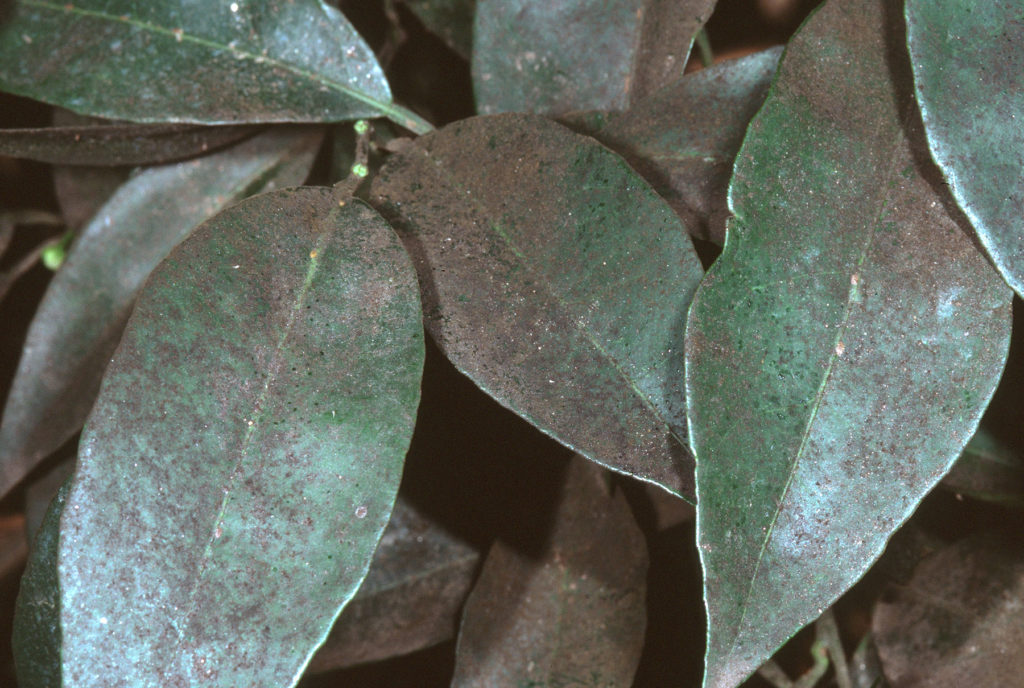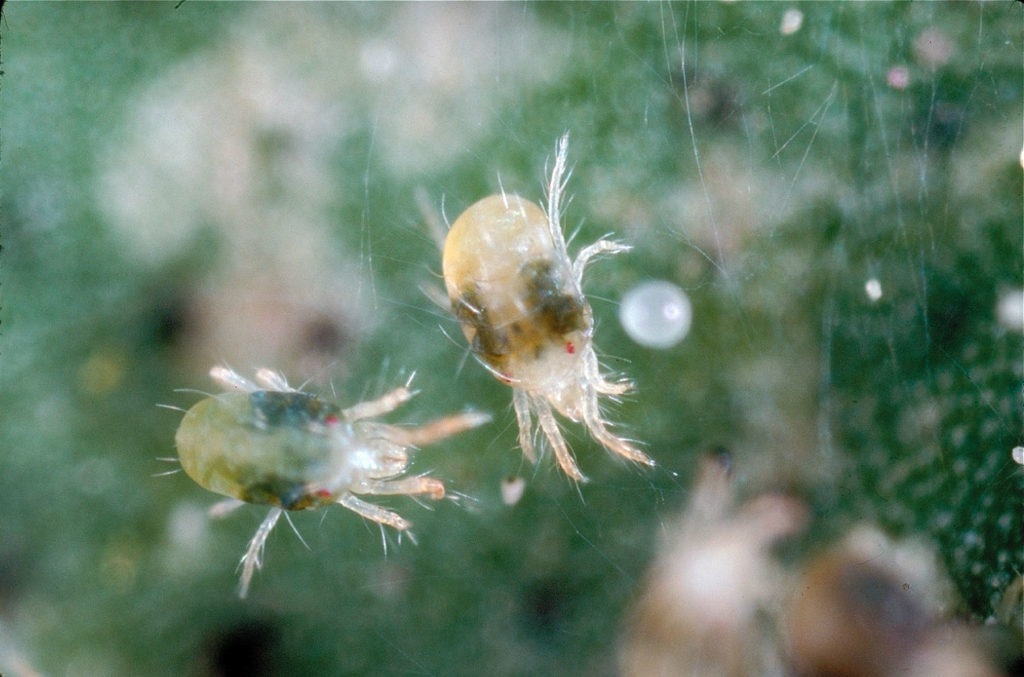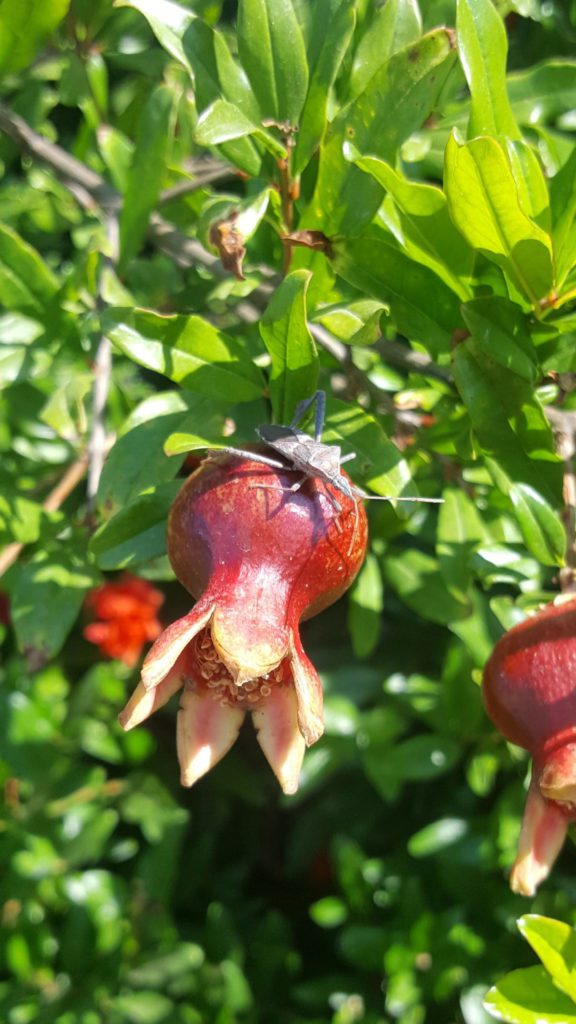The University of California (UC), Pest Management Guidelines provide recommendations for managing approximately 14 insect and mite pests on pistachio. A few of those pests, growers and pest control advisers (PCAs) should pay close attention to during the first few years while young trees establish. According to the National Agriculture Statistic Service, the industry in California has expanded by about 35 percent between 2010 and 2017 from roughly 215,000 to just over 329,000 acres. New plantings in that period ranged from 6,730 (2010) to 24,500 (2013), with acreage expanding by 18,000 in 2017.
With so many acres of new pistachio trees in California, it is fitting to highlight a few economically important pests covered by the UC Pest Management Guidelines to prompt growers and PCAs to start thinking about the coming season. A group of insects important on establishing trees is the hemipterans. They have piercing-sucking mouthparts and include true bugs, scales, and aphids. All scale and aphid, and some true bug insects feed on plant sap that mostly contains sugars formed from photosynthesis.

Scale
Feeding from soft scale insects such as black scale, Saissetia oleae (Olivier) (Fig. 1), brown soft scale, Coccus hesperidum (L.), and frosted scale Parthenolecanium pruinosum (Coquillett) can severely retard shoot growth. In addition to removing vital nutrients via plant sap, infestations can lead to a reduction in plant photosynthesis. Soft scale pests such as these excrete a large amount of honeydew, a carbohydrate-rich liquid, which contaminates leaves and branches, providing a substrate for the growth of black sooty mold (Fig. 2).
The good news is that soft scale infestations on young trees typically do not need an insecticide application to maintain populations below an economic damaging level. If pyrethroid insecticides are minimized or avoided, natural enemies such as parasitoids, lady beetles, and green lacewing do an excellent job. The parasitoid wasp, Metaphycus luteolus Timberlake, for instance kills soft scale in a couple of ways. First, to obtain protein while developing eggs inside their body, newly emerged female parasitoids feed on the body fluid (hemolymph) of young scale, termed host-feeding. Second, females lay an egg inside or on a scale, the egg hatches and the larvae feeds and develops, killing the scale. The parasitoid adult emerges from the scale body by cutting a hole through the exoskeleton (Fig. 1)
When monitoring for soft scale on new pistachio trees, begin in early to mid-January and examine several dormant shoots about 12 inches long looking for live and dead scale. Importantly, make sure to take note of the number of scale parasitized. The small exit hole made by the parasitoid, provides a telltale sign that parasitoid natural enemies are hard at work in the orchard.
False Chinch Bug
False chinch bug, Nysius raphanus Howard, is a true bug and can wreak havoc on new trees. Similar to soft scale, the species has piercing-sucking mouthparts and feeds on plant sap. False chinch bug does not produce honeydew and while feeding, injects a toxic compound that disrupts the plant’s water transport system. When severe infestations occur, hundreds can feed on a single tree resulting in rapid leaf-drop and death of the tree.
False chinch bug measures approximately 1/8 inch in length and appears brownish grey in color. The bug has an appearance similar to a lygus bug. This species overwinters as nymphs both in and outside of orchards at the base of weeds. It prefers weeds such as wild mustard, wild radish, shepherd’s purse, and London rocket. In spring nymphs and some adults will migrate into orchards as weeds dry and become an unsuitable food source. Because nymphs have not developed wings, they migrate into an orchard by crawling. This behavior occurs in the early morning hours or evening hours in order to avoid desiccation.
To help keep populations of false chinch bug from building to economic levels, good weed management, both inside and around the orchard plays a key role in an integrated pest management (IPM) strategy. The University of California Pest Management Guidelines provides a list of treatment options if populations on young trees are high enough that wilt becomes evident.

Mites
Also, web spinning mites such as twospotted spider mite, Tetranychus urticae Koch, and Pacific mite, Tetranychus pacificus McGregor, can occasionally cause economic damage on young (as well as established) trees. This group is more closely related to spiders, than to insects. Adults measure only 1/20 of an inch and have eight legs. During periods of active feeding, adults appear yellowish green in color and have two spots on either side of their body (Fig. 3). Eggs of both species appear spherical shape (Fig. 3) and are translucent when laid but become opaque prior to hatching.
Mites feed by using needle-like mouthparts to remove the contents of plant cells. This results in small necrotic spots on the leaf surface, called stippling. As few as three mites per leaf can cause economic damage. Monitor for spider mites beginning in June and continue through August. Use at least a 10x hand lens and first look on the underside of leaves where colonies tend to initially build. Pay close attention along dusty roads and where trees may be water-stressed and in areas with more alkaline soil. Clusters of brown leaves often provide and early sign of a mite infestation.
Again, the good news is that natural enemies, such as sixspotted thrips, spider mite destroyer, and minute pirate bug play a major role in keeping spider mite populations. Employ good IPM practices by minimizing broad-spectrum insecticides, reducing dust from road traffic, and keeping trees well-irrigated will help to prevent economically damaging infestations.


Developmental Stage of Orchard
Lastly, producers need to consider pest management issues in the development stage of an orchard.
Intercropping, for instance with short or a long-term crop can provide some income while the
orchard becomes established. Crops such as cotton, watermelon, or beans have been attempted, but of course, producers must carefully consider factors such as irrigation compatibility, arthropod pests, and disease management prior to making a choice.
Intercropping pistachio with pomegranate has been tried and moreover, because pomegranate tolerates drought and has a thick canopy, it functions well as a living fence and/or hedgerow. Pomegranate is a preferred host of leaffooted bug (LFB), Leptoglossus zonatus (Dallas) and can attract LFB during early summer—a period of susceptible nut development (Fig. 4). The species cause loss by feeding directly on developing nuts, resulting in aborted nuts or kernel necrosis. Moreover, LFB can transmit botryosphaeria, a bacterium associated with panicle and shoot blight. Also, pomegranate plays a key role in the life cycle of LFB. In early to mid-September, LFB move onto pomegranate and produce offspring that mature to adults, then move to more sheltered overwintering sites.
Intentionally planting pomegranate in proximity to pistachio is not recommended.

Insecticide use should occur only after considering the potential risks of the compound to beneficial organisms, including bees and biological control agents, and to air or water quality. For more information on these topics please consult the UC IPM Pest Management Guidelines for pistachio at http://www2.ipm.ucanr.edu/agriculture/pistachio/











